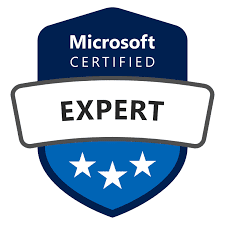Competitive intelligence is a strategic device that allows you to indicate a demarcation tactic for your company. It consists of monitoring several elements that concern competition. This initiative allows us to stay one step ahead and offer better. In this article, we will focus on this subject. What does competitive intelligence consist of? What are the steps to follow to set up an effective system?
What does competitive intelligence consist of?
Competitive monitoring refers to all the methods used to monitor the competitive environment on an ongoing basis. This approach allows you to have a global view of your sector of expertise. The objective is, initially, to acquire information on the actions of the competition in terms of marketing practices and strategic processes. Then adopt an effective marketing maneuver to stand out .
Several elements must be considered in competitive monitoring: communication strategy, product or service news, financial results, evolution of the structure, Internet reputation, customer relationship management, etc. . There are many areas to watch. This is why the approach must be intelligent. There are also different tools that help collect and then analyze data.
Competitive intelligence is an company's marketing strategy It allows you competitive actions identify strategic points to develop your market, and analyze the competitiveness of your offer .
What are the benefits for your digital strategy?
As part of a web marketing strategy, competitive intelligence helps define a digital marketing strategy . By having a global vision of the market, and anticipating the actions of competitors, you will be able to increase the performance of your business .
Steps to setting up competitive intelligence
Identification of competitors
There are three types of competitors: direct competitors who offer the same products and who target the same audience as those of your company; indirect competitors with different products but meeting the same needs as your company; and tertiary competitors who target the same audience with different products.
Identifying them gives you the opportunity to define the path to follow in your strategic choices and in your overall functioning. The list must be regularly updated . This information serves as the basis for your analyses.
Collection of information
It is an important step. It consists of collecting relevant information concerning the competition through different channels: company newsletters , social networks, the website, influential employees in the company, the press.
To optimize this essential work, there are free, easy-to-use tools:
- Google Alerts : notifies you in real time of all publications that have a link to your competitors .
- SEMrush : is a complete tool for competitive intelligence in web marketing . It helps you analyze trends and your competitors' websites . Additionally, it performs social media analysis, SEO, SEM, etc.
- Netvibes : is a tool for collecting and organizing information . With a dashboard, it organizes and sorts information from blogs, social media, and selected websites.
Sorting and using data
It is a step which consists of classifying the information according to its relevance in view of the analysis objectives. It must be implemented continuously to be effective. Email alerts or RSS feeds help you with this task.
The data is distributed over several sections , then it is synthesized . Thus, they overlap to establish a clear pattern.
The competitive intelligence table is made up of the following elements: the different sources of information, the collection dates, the names of direct and indirect competitors, the location, the prices applied by competitors, the key performance indicators , financial data.
Dissemination of results
This involves sharing information internally so that each department receives the information that is useful to it. Information is essential for understanding issues and serving as a guide for strategic decision-making . The analyzes can be distributed in the form of a white paper to the teams.
What tools for your competitive intelligence?
For competitor monitoring to be effective, the analysis must be carried out regularly and in real time . The work is carried out in three stages: first the search for information, then the interpretation of the results, and finally the exploitation of the data. To help you, several tools are available:
- Social networks
- Directories
Social networks are considerable sources of competitive information. Among other things, they allow you to perceive the audience's engagement rate . This platform gives the possibility of following the news of the competitors . Each social network reaches different segments. LinkedIn is a more professional platform, while Facebook is more popular.
- RSS Feeds
To save time , the collection of information can be done automatically . RSS feed aggregators are functional tools to accomplish this task.
- Strategic keywords
Several software programs available for free and in paid versions to alert and save content based on strategic keywords .
- Competitive intelligence tables
It is the tool that allows you to manage competitive intelligence . It is built around a defined development objective. Monitoring is done on an Excel table or a collaborative spreadsheet like Google Sheets . However, more efficient tables are available online.
- Field investigation
To complete the information , a field survey is necessary . The type of information collected is of a different order from that on the Internet. The means implemented are also different. The sales teams are mobilized, because they are in direct contact with prospects, suppliers, but also with competitors.
Competitive monitoring is a strategic area still little mobilized, but which is nevertheless major. It helps to consolidate the notoriety of your brand .


